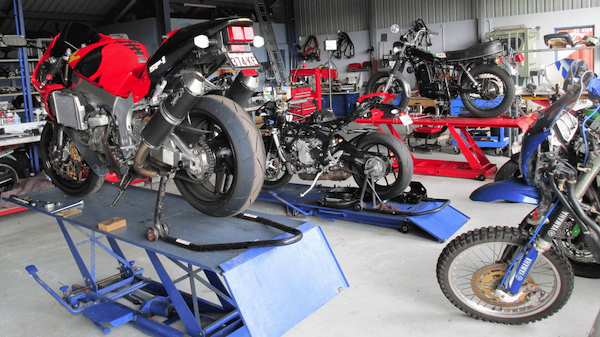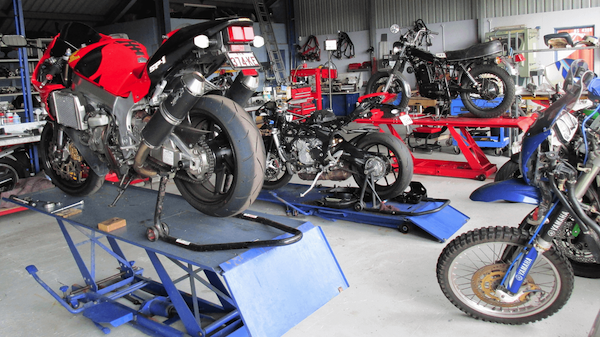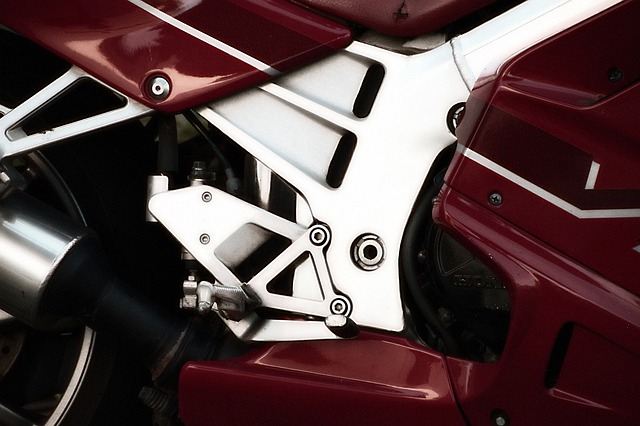Understanding the Significance of Properly Aligned Headlights
Motorcycle enthusiasts and riders often wonder how to adjust headlight on motorcycle to achieve optimal safety and visibility on the road. In the world of engineering and precision, ensuring that your motorcycle’s headlights are accurately aligned is not merely a matter of aesthetics; it directly impacts rider safety and overall road visibility. Adequate headlight alignment plays a crucial role, especially during nighttime rides and adverse weather conditions. Properly aligned headlights help to illuminate the road ahead, alerting riders to potential obstacles, pedestrians, or other vehicles, thus preventing accidents and ensuring a safer riding experience.
Tools and Materials You’ll Need
Embarking on the journey of adjusting motorcycle headlights requires the right tools to ensure a successful outcome. As a proficient engineer, you’ll need a set of tools designed to facilitate this task. Here’s a list of tools and materials that will prove indispensable:
- Screwdrivers: A set of screwdrivers with varying head sizes will help you access the headlight adjustment screws with precision.
- Masking Tape: This tool will serve as your reference point during the adjustment process. It will help you mark the headlight’s original position and ensure that you don’t veer too far from the optimal alignment.
- Measuring Tape: Achieving precise alignment involves accurate measurements. A measuring tape will be your ally in determining the proper distance and angle for your headlight’s placement.
- Work Gloves: While adjusting headlights, it’s essential to maintain cleanliness and prevent smudges on the lens. A pair of work gloves will ensure that you handle the delicate components with care.
Preparing Your Motorcycle for Headlight Adjustment
Before you delve into the technical aspects of headlight alignment, it’s crucial to prepare your motorcycle for the adjustment process. As a meticulous engineer, follow these steps to ensure a safe and effective adjustment:
- Find a Level Surface: Park your motorcycle on a level and flat surface. This will provide the ideal setting for accurate measurements and adjustments.
- Turn Off the Engine: Safety should always be a top priority. Turn off the motorcycle’s engine to avoid any accidental starts or unexpected movements during the adjustment process.
- Disconnect the Battery: While it might seem like an extra step, disconnecting the battery adds an extra layer of safety. This precaution prevents any electrical mishaps and ensures your undivided attention to the task at hand.
By adhering to these preliminary steps, you create a secure environment to execute the headlight adjustment process with precision.
Identifying Headlight Alignment Points
To perform an effective headlight adjustment, it’s crucial to identify the specific points of adjustment on your motorcycle. As an engineer who values accuracy, understanding these markers will set the stage for a successful adjustment process.
Vertical Adjustment Markers: Typically located on the headlight housing or nearby components, these markers indicate the ideal vertical alignment. They’re often represented by symbols like “U” for “up” and “D” for “down.” These symbols provide a clear reference point for achieving the desired angle of the headlight beam.
Horizontal Adjustment Screws: The horizontal alignment of the headlight beam is controlled by screws located on the sides of the headlight assembly. These screws allow you to adjust the side-to-side positioning of the headlight, ensuring that the beam is centered and aligned with the motorcycle’s direction.
Understanding these alignment points is essential for the next phases of the adjustment process. Keep in mind that different motorcycle models may have slightly varying adjustment mechanisms, so consulting your motorcycle’s manual is always recommended.
Horizontal Alignment Adjustment
As you approach the horizontal alignment adjustment phase, your engineering mindset will appreciate the intricacies of achieving precise symmetry. Follow these meticulous steps to ensure your motorcycle’s headlight is horizontally aligned for optimal performance:
- Illuminate a Wall: Park your motorcycle approximately 10 to 15 feet away from a flat wall or surface. This surface will serve as your reference point to assess the headlight’s alignment.
- Masking Tape Reference: Place a strip of masking tape on the wall at the same height as the center of your headlight lens. This reference point will allow you to gauge the headlight’s alignment accurately.
- Adjust the Beams: Turn on your motorcycle’s headlights to their low-beam setting. Observe the illuminated spots on the wall. The brightest spots should align with the masking tape reference. Use the horizontal adjustment screws to align the beams accordingly.
- Symmetry Matters: Repeat the process for both the left and right headlights, ensuring symmetrical alignment. This step is crucial for even illumination and preventing blinding oncoming traffic.
Vertical Alignment Adjustment
The vertical alignment of your motorcycle’s headlights significantly impacts the range and coverage of the light beam. As an engineer, you understand that precision in this aspect directly correlates with enhanced safety and visibility. Here’s how you can expertly adjust the vertical alignment of your motorcycle’s headlights:
- Wall Illumination Continues: Maintain your motorcycle’s distance from the wall and keep the masking tape reference in place. This ensures consistency in your adjustment process.
- Adjusting the Vertical Angle: With the low beams activated, observe the illuminated spots on the wall. The center of the brightest spots should align with the masking tape reference. Use the vertical adjustment markers to achieve the desired alignment.
- Mind Your Range: Consider the ideal height of the beam pattern based on your motorcycle’s design and the height of your headlight. Aim for a range that provides optimal visibility without blinding other road users.
Verifying Alignment and Making Fine-Tune Adjustments
As a meticulous engineer, you understand that verification is key to achieving optimal results. After the initial adjustments, take the following steps to fine-tune the alignment:
- Test Ride: Take your motorcycle for a test ride on a familiar road. Pay close attention to the beam’s coverage and how well it illuminates the road ahead. If necessary, make note of any adjustments that need to be fine-tuned.
- Revisit the Wall: Park your motorcycle in front of the wall again, repeating the illumination test. This time, you can visually assess if the adjustments made during the test ride align with your desired outcomes.
- Iterative Process: Fine-tuning might require a few iterations to achieve the perfect balance between visibility and avoiding glare. Make small adjustments as needed to achieve the optimal result.
Common Mistakes to Avoid During Adjustment
Even the most proficient engineers encounter challenges, and headlight alignment is no exception. By being aware of common mistakes, you can avoid pitfalls that might compromise your adjustments. Here are some pitfalls to watch out for:
- Over-Tightening Screws: While enthusiasm is commendable, over-tightening adjustment screws can damage delicate components or restrict future adjustments. Apply just enough pressure to secure the alignment.
- Misaligned Markers: Misinterpreting the adjustment markers can lead to inaccurate alignment. Always refer to your motorcycle’s manual for clarity on marker symbols and directions.
- Inadequate Verification: Skipping the verification step can negate all your efforts. Always test the alignment on the road and against a wall to ensure consistent performance.
Additional Tips for Enhanced Headlight Performance
As a knowledgeable engineer, you appreciate that meticulous care extends the life and effectiveness of mechanical components. Here are additional tips to further enhance your motorcycle’s headlight performance:
- Keep the Lens Clean: Regularly clean your headlight lens to remove dirt, bugs, and debris. A clean lens ensures maximum light output and clarity.
- Use High Beams Wisely: While high beams provide enhanced visibility, use them judiciously, especially when riding in traffic. Blinding other road users can lead to hazardous situations.
Conclusion: Riding Safely with Optimally Adjusted Headlights
In the realm of motorcycle engineering, attention to detail can make all the difference in ensuring rider safety. By meticulously adjusting your motorcycle’s headlights, you’re not only enhancing visibility but also contributing to overall road safety. Proper alignment mitigates risks, prevents accidents, and allows you to navigate challenging road conditions with confidence.
As an engineer, you recognize that every component serves a purpose, and headlight alignment is no exception. By adhering to the step-by-step guide outlined above, you’ve taken a proactive approach to optimize your motorcycle’s headlight performance. Remember, safety on the road is paramount, and your dedication to precision engineering extends to every facet of your riding experience.
Call to Action: Subscribe to our newsletter for the latest updates on motorcycle maintenance, engineering insights, and expert tips to elevate your riding experience.
Disclaimer: The content provided in this article is for informational purposes only. Always refer to your motorcycle’s manual and consult with a professional mechanic if you have concerns about adjustments or maintenance.




